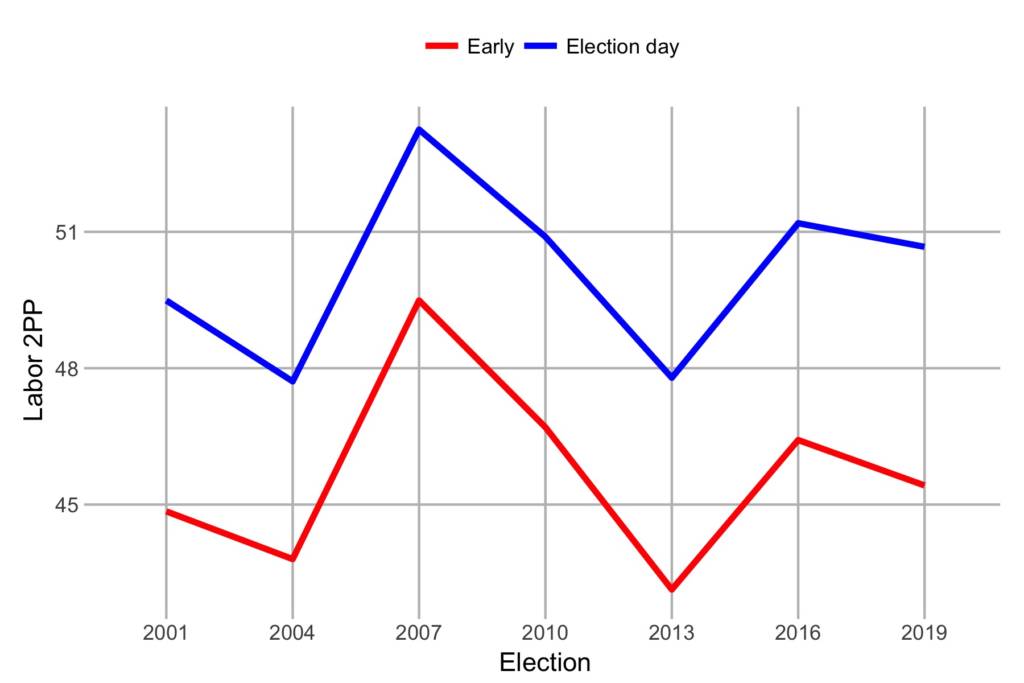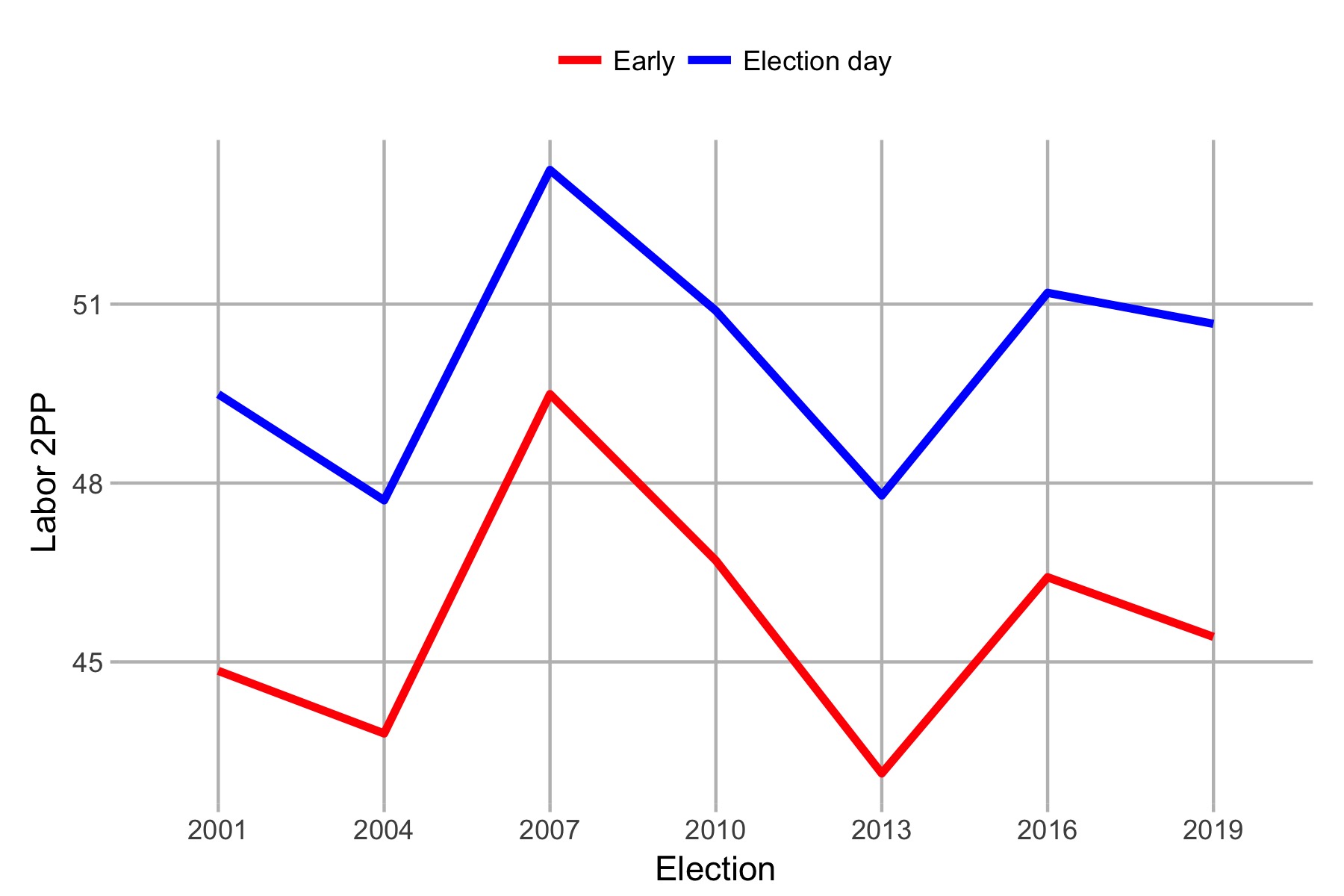This post draws on analysis in my chapter in Morrison’s Miracle, a forthcoming book from ANU Press and Academy of the Social Sciences in Australia about the 2019 federal election.
One of the most significant ways in which our voting system is changing over time is the rise in voting early.
This is happening in all sorts of elections: federal, state and local. The trend is stronger in some jurisdictions than others, but no-one can hold back the tide.
Almost 33% of votes were cast as early pre-poll votes in 2019. This figure rises to about 41% once you include postal votes, which must have been cast before election day.
This growing trend means that the early vote is more important than ever, and is absolutely critical to the election result.
I don’t think enough attention was paid to the gap between the two-party-preferred vote on election day as opposed to the early vote.
Labor has always done relatively better on election day compared to the early vote, but the gap was bigger than it has been at any election since 2001, when over 90% of votes were cast on the day. That gap was 5.3% in 2019.
No party had ever won the election day vote and failed to win the election prior to the 2016 election, and now it has happened twice. Labor won 51.2% of the election-day two-party-preferred vote in 2016 and 50.7% in 2019. Yet solid majorities in the early vote pushed the Coalition over the line at both elections.
This trend isn’t likely to go away and has implications for future elections. I don’t think we can assume that those early voters are more conservative because they vote early – it seems more likely that conservative voters are more likely to choose to vote early and have thus allowed Labor to win the (smaller and less important) election day vote.
It also has implications for us analysts: we had a number of elections in late 2018 where very strong swings away from the Liberal Party on election night were significantly dampened when the early vote reported late that night.
As long as the gap between election day and the early vote remains consistent we should be able to factor these votes in, but a growing gap would create more unpredictability.
Finally, here’s a table showing the Labor two-party-preferred vote in the election-day and early vote, and what proportion of the total vote was cast on election day, in each federal election over the last two decades.
| Election | ALP 2PP election day | ALP 2PP early vote | Difference | Election day proportion |
| 2001 | 49.5 | 44.8 | 4.6 | 90.4 |
| 2004 | 47.7 | 43.8 | 3.9 | 88.3 |
| 2007 | 53.2 | 49.5 | 3.8 | 85.5 |
| 2010 | 50.9 | 46.7 | 4.2 | 81.6 |
| 2013 | 47.8 | 43.1 | 4.7 | 72.4 |
| 2016 | 51.2 | 46.4 | 4.8 | 67.6 |
| 2019 | 50.7 | 45.4 | 5.3 | 58.0 |




I always vote early, usually on the first day of early voting. I think all elections, be that local, state or commonwealth, should be by postal vote sent to all enrolled voters like what happens in most council election in Victoria. No need for hundreds of pre poll (early voting) station nor thousands of polling stations on election day. Candidates can attend local candidate forums, use social media to distribute their platform and can still leaflet drop and door knock as well.
@Adrian Jackson
While I support early voting and postal voting I definitely would not support removing the option to vote in person.
The ease of voting in Australia is a massive strength of our democracy, anything to prevent the nonsense of “get out the vote” and worse still “voter suppression” efforts. Many people (especially young people) have never had a cause to send a letter, funneling all votes through that method only is soft disenfranchisement. Also, mandatory postal elections exacerbates the failure to reach people that move often or have an address with a hard to reach post box (or no post box!).
My feeling is that overall turnout hasn’t really changed as early voting proportions have increased, but it might be worth a look at that dimension too.
If some of the early voters would have failed to vote when early voting was less available would that have implications for the political allegiances of those people?
More than a few submissions to post-election inquiries suggest reducing the duration of the early voting period. That’s partly because of the greatly increased staffing and logistical demands on all parties and also the electoral authorities, and because most early voters wait till the last week (or few days) of early voting.
I think the trend to early voting has the effect of reducing the community aspect of elections, where every citizen turns up to perform the ritual of democratic participation.
Ben, you make a very important point ::”I don’t think enough attention was paid to the gap between the two-party-preferred vote on election day as opposed to the early vote.”
Perhaps another illustration of increased polarisation of our politics ?. It looks as if voters are making up their minds quicker, & more decisively ?
Comments are closed.